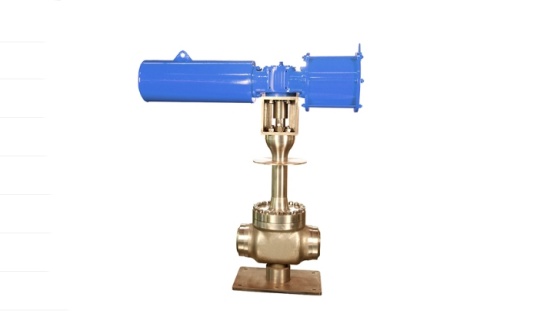
ballvalve
Ultra-low temperature top-mounted ball valves are widely used in oil and gas pipelines, LNG storage facilities, petrochemicals, metallurgy, power, nuclear power and other equipment. Inspection and Testing: API 598, ISO 5208, ANSI B16.104, BS6364; Fire resistance test: API 6FA, API 607

The ball of the ultra-low temperature top-mounted ball valve is installed from the upper end of the valve body. It is mainly used as a valve for cutting off pipelines and can be directly maintained and serviced online. The adjustable spring pre-tightening valve seat design is adopted. Under the action of the spring and the medium pressure, the valve seat is pushed towards the ball to ensure the sealing performance under low temperature and low pressure. It adopts the DBB, DIB-1 and DIB-2 elastic valve seat structure and has a built-in discharge function.
The valve seat sealing ring material of the ultra-low temperature top-mounted ball valve is PCTFE. The back of the valve seat adopts a lip ring sealing structure. Due to the plastic contraction of the sealing surface under low-temperature working conditions, the spring force inside the lip ring automatically compensates for the sealing, ensuring the sealing performance under low-temperature working conditions. The lip ring sealing ring is made of low-temperature resistant material ELGILOY+PTFE, which has excellent sealing performance under the working condition of -196℃.
The valve body is integrally cast with few leakage points.
The extended valve cover design and the isolation plate ensure that the valve stem packing does not freeze at low temperatures, guaranteeing the sealing performance.
The valve stem adopts a low-leakage graphite packing seal.
The valve stem is designed to prevent flying out, be fireproof and anti-static.
The ultra-low temperature top-mounted ball valve is easy and quick to disassemble on the pipeline, and its maintenance is convenient and fast. When a valve malfunctions in the pipeline and needs to be repaired, there is no need to remove the valve from the pipeline. Just remove the valve cover bolts and nuts, take the valve cover and valve stem assembly out of the valve body together, and then remove the ball and valve seat assembly. Then, the ball and valve seat can be maintained online, saving maintenance time.
Demand feedback